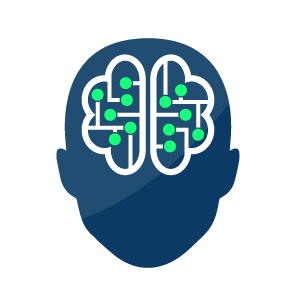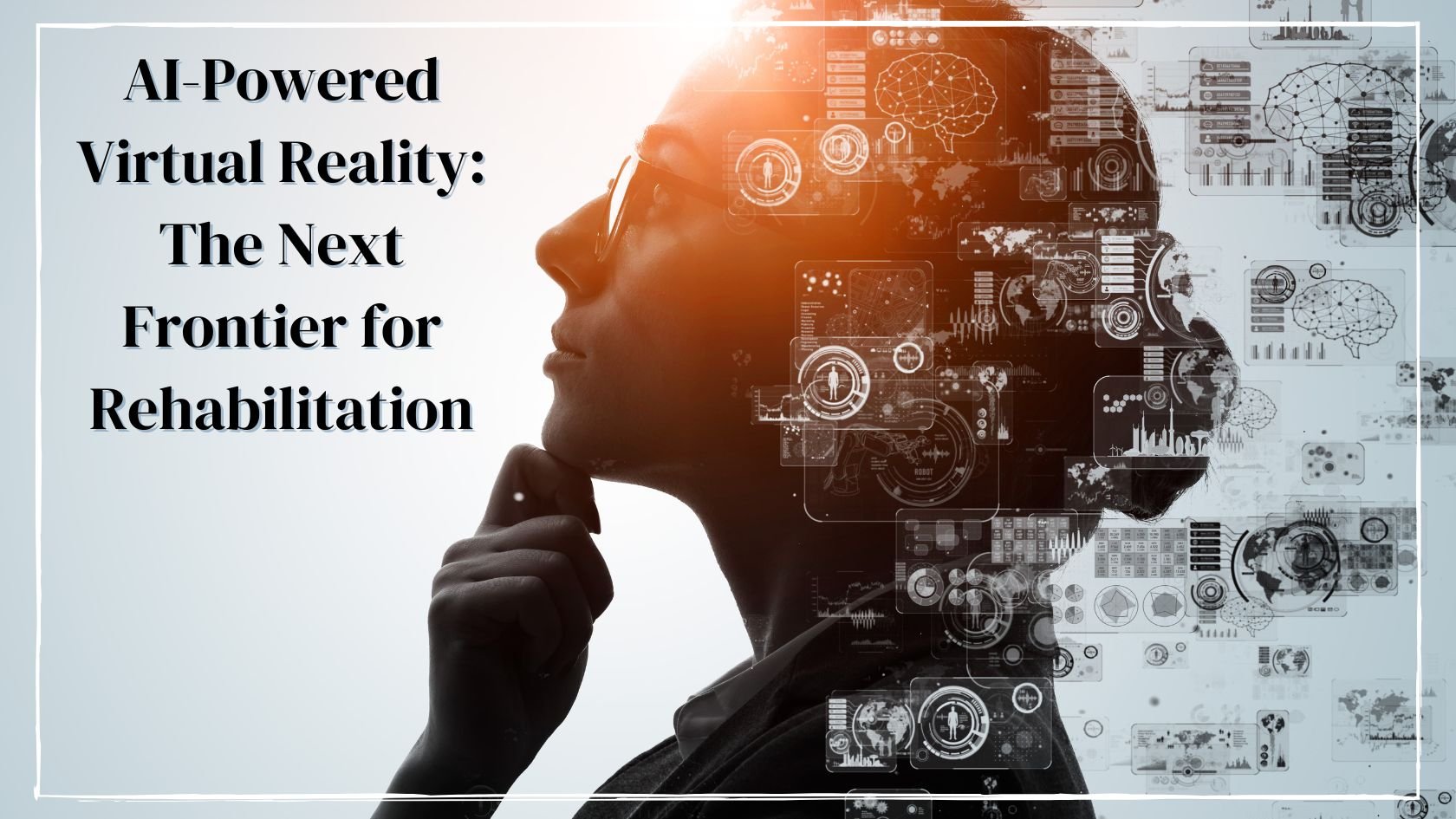AI-Powered Virtual Reality:Next Frontier for Rehabilitation
Written by: Brianna Hodge
Imagine stepping into a virtual world where you can actively engage in your physical therapy session, guided by an AI-powered assistant that tracks your progress in real time and adjusts the difficulty level to match your needs. This isn’t a scene from a sci-fi movie—it’s the emerging reality of rehabilitation therapy. Artificial intelligence (AI) and virtual reality (VR) are revolutionizing the healthcare landscape, especially in rehabilitation. Let’s explore how this powerful combination is reshaping therapy for patients and practitioners alike.
The Intersection of AI and VR
The integration of AI with VR has opened up unprecedented possibilities in rehabilitation therapy. AI’s ability to analyze vast amounts of data combined with VR’s immersive environments creates a dynamic and adaptable approach to treatment. These systems can deliver tailored exercises, monitor progress, and provide real-time feedback, making therapy more efficient and engaging.
For example, a 2022 study published in the Journal of NeuroEngineering and Rehabilitation showed that patients recovering from stroke demonstrated improved motor skills when using VR systems augmented with AI. The technology analyzed patients’ movements, identified patterns, and suggested adjustments to improve their rehabilitation outcomes (Journal of NeuroEngineering and Rehabilitation).
A Personalized Approach to Healing
Traditionally, rehabilitation therapy has followed a one-size-fits-all model. While effective for some, this approach often overlooks the unique needs and capabilities of individual patients. AI-powered VR systems are changing this by offering personalized therapy programs.
Using machine learning algorithms, these systems analyze patient data—from range of motion and muscle strength to cognitive performance—and create customized exercises. For instance, a study by the National Center for Biotechnology Information (NCBI) found that adaptive VR therapy programs significantly enhanced recovery rates in patients with traumatic brain injuries (NCBI).
Case Study: Stroke Rehabilitation
-
Take the case of Linda, a stroke survivor who struggled with regaining motor function in her right arm. She was introduced to an AI-powered VR therapy program. Through a series of gamified exercises, Linda practiced reaching for virtual objects and simulating daily tasks like pouring a glass of water.
The AI system monitored her movements, identifying weak areas and adjusting exercises to target them. Over six months, Linda’s mobility improved by 65%, allowing her to regain independence.
-
Another inspiring story comes from the Rehabilitation Institute of Chicago, where researchers used VR and AI to assist patients with gait training. Patients walked on a treadmill while immersed in a virtual environment designed to mimic real-world terrains.
AI analyzed their walking patterns and suggested corrective measures, resulting in significant improvements in balance and coordination (Rehabilitation Institute of Chicago).
-
The combination of AI and VR has also proven effective in chronic pain management. In a clinical trial conducted at Cedars-Sinai Medical Center, patients experiencing chronic pain used VR environments designed to distract and reframe their perception of pain.
AI algorithms monitored patient feedback and adjusted the scenarios in real time to maximize their calming effects. Patients reported a 25% reduction in pain perception during and after sessions, showcasing the therapeutic potential of this approach.
Neuro Rehab VR: Empowering Therapists with VEDA
Neuro Rehab VR stands as a leader in revolutionizing rehabilitation through its innovative technologies. One of its standout contributions is VEDA, an AI-powered tool designed to automate and enhance the administrative side of therapy. VEDA generates detailed patient notes by analyzing therapy sessions in real time, saving therapists valuable time and ensuring comprehensive documentation.
By integrating VEDA, Neuro Rehab VR bridges the gap between effective therapy and administrative efficiency. Therapists no longer need to spend hours manually recording session details; instead, they can focus entirely on their patients. This capability not only improves the quality of care but also reduces the stress and burnout often associated with documentation-heavy workflows.
Additionally, VEDA complements Neuro Rehab VR’s XR Therapy System, which provides immersive VR environments for patients recovering from neurological conditions like stroke and spinal cord injuries. Together, these technologies create a cohesive ecosystem where therapists have access to real-time analytics, progress tracking, and AI-driven recommendations for treatment adjustments. Patients benefit from tailored, engaging sessions that mimic real-world tasks, accelerating their recovery while keeping them motivated.
Neuro Rehab VR’s dedication to accessibility ensures that these tools are available to a wide range of healthcare settings, including rural areas. Their portable solutions and therapist training programs make it easier for practitioners to adopt this technology, transforming how rehabilitation is delivered across the board.
Overcoming Challenges in Rehabilitation
Accessibility
Despite its promise, one challenge of AI-powered VR therapy is accessibility. These systems require specialized hardware and software, which may not be available in all healthcare settings. However, companies like Neuro Rehab VR are working to bridge this gap by offering affordable and portable solutions.
Learning Curve
Another hurdle is the learning curve for both patients and therapists. Adopting new technology can be daunting, but the intuitive design of most AI-VR platforms helps ease this transition. Training programs and certification courses, such as those offered by Neuro Rehab VR, equip therapists with the skills needed to integrate this technology into their practice.
Ethical Considerations
The integration of AI in healthcare raises important ethical questions, such as data privacy and the potential for algorithmic bias. Developers must ensure that these systems prioritize patient safety and adhere to strict data protection standards. Collaborative oversight from medical professionals, ethicists, and technologists is essential to building trust in these innovations.
The Role of Research and Development
The rapid advancements in AI and VR would not be possible without continuous research and development. A 2023 paper published in Frontiers in Psychology emphasized the potential of AI-VR systems in addressing cognitive impairments in patients with neurodegenerative diseases. The study demonstrated how virtual environments, combined with AI-driven tasks, improved memory retention and problem-solving skills ("Frontiers in Psychology").
Moreover, collaborative efforts between tech companies, healthcare providers, and academic institutions are driving innovation. For instance, the partnership between Stanford University and various VR startups has led to breakthroughs in pain management therapies, showcasing the versatility of this technology.
Future Directions
As AI and VR technologies evolve, their applications in rehabilitation therapy will only expand. Here are some exciting developments on the horizon:
Tele-rehabilitation: AI-powered VR platforms are enabling remote therapy sessions, allowing patients to receive treatment from the comfort of their homes.
Wearable Integration: Combining VR with wearable devices will provide even more accurate data on patient performance and outcomes.
AI-Driven Insights: Advanced AI algorithms will offer deeper insights into patient behavior, helping therapists refine treatment plans.
Multisensory Feedback: Future VR systems will incorporate haptic feedback and other sensory inputs, making therapy even more immersive and effective.
Gamification: Enhanced gamified elements will further engage patients, turning rehabilitation into an enjoyable and motivating experience.
Call to Action for Therapists and Patients
For therapists, the integration of AI and VR offers a chance to enhance their practice and deliver better outcomes. Embracing this technology requires an open mind and a willingness to learn, but the rewards are immense. Patients, too, should explore these options and advocate for access to cutting-edge therapies that can accelerate their recovery.
Conclusion
The fusion of AI and VR is transforming rehabilitation therapy, offering personalized, engaging, and effective treatment solutions. Companies like Neuro Rehab VR are at the forefront of this revolution, proving that innovation and compassion can go hand in hand. By embracing these technologies, we can empower patients to reclaim their independence and improve their quality of life.
The future of rehabilitation is here, and it’s more promising than ever.
-
"Journal of NeuroEngineering and Rehabilitation." BioMed Central,
"NCBI." National Center for Biotechnology Information,
"Rehabilitation Institute of Chicago." Shirley Ryan AbilityLab,
"Neuro Rehab VR." Neuro Rehab VR,
"Frontiers in Psychology." Frontiers Media,
Cedars-Sinai Medical Center,






